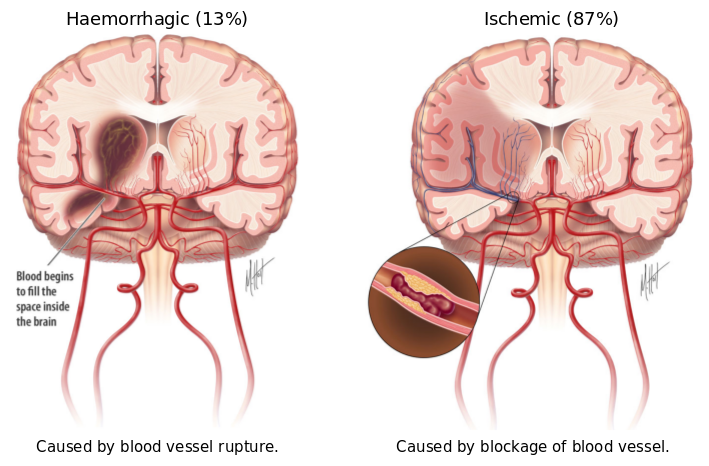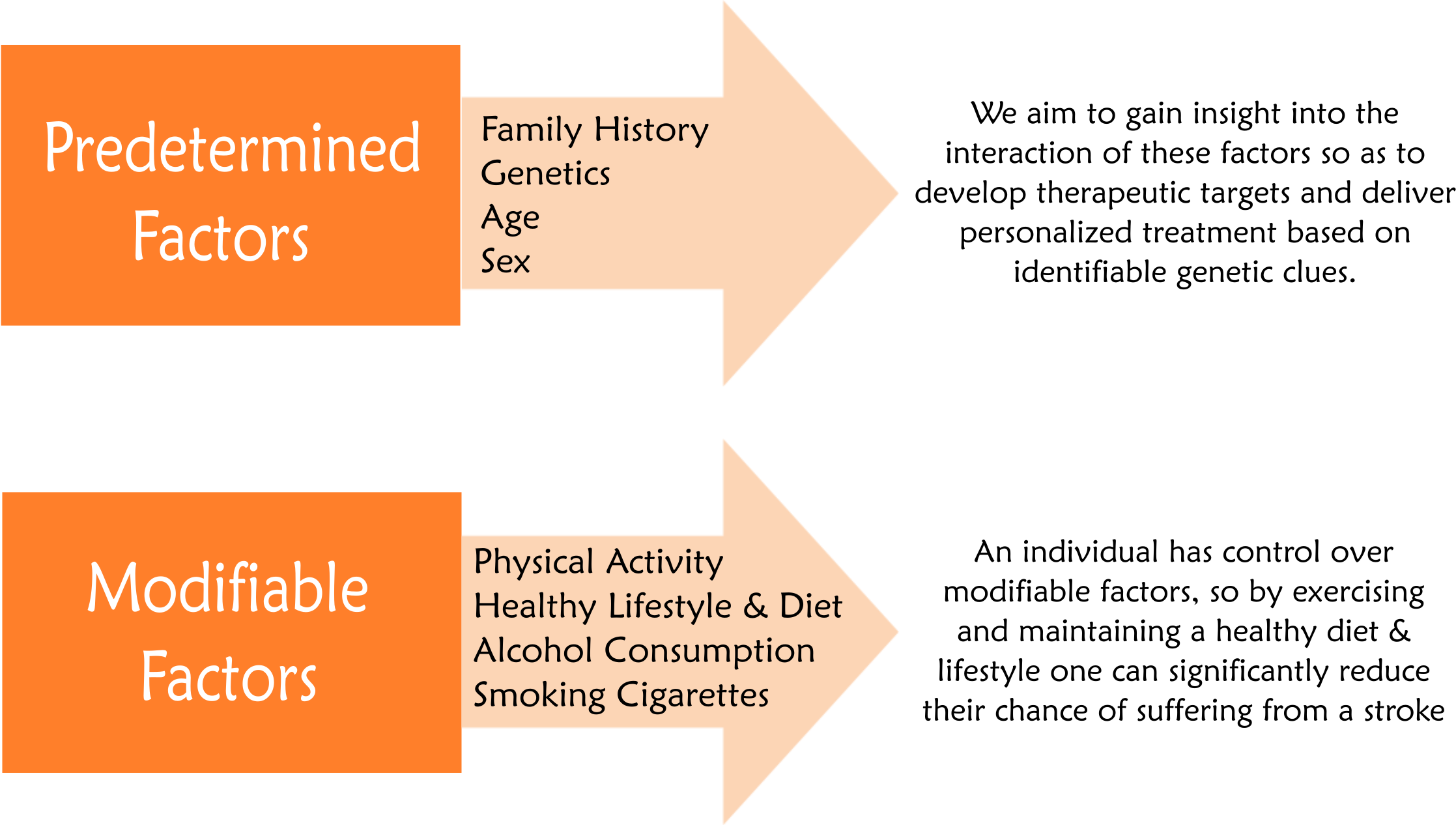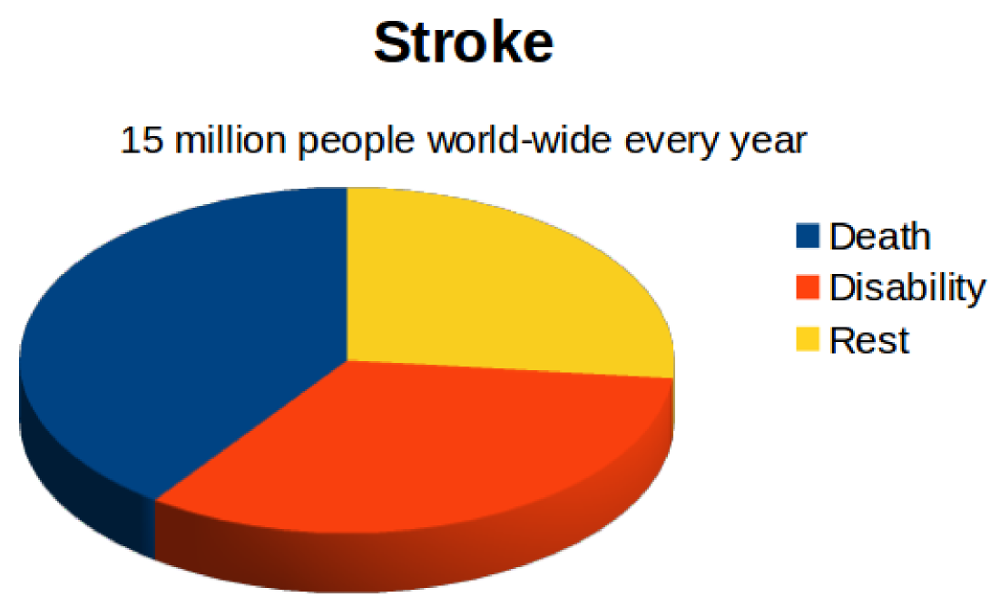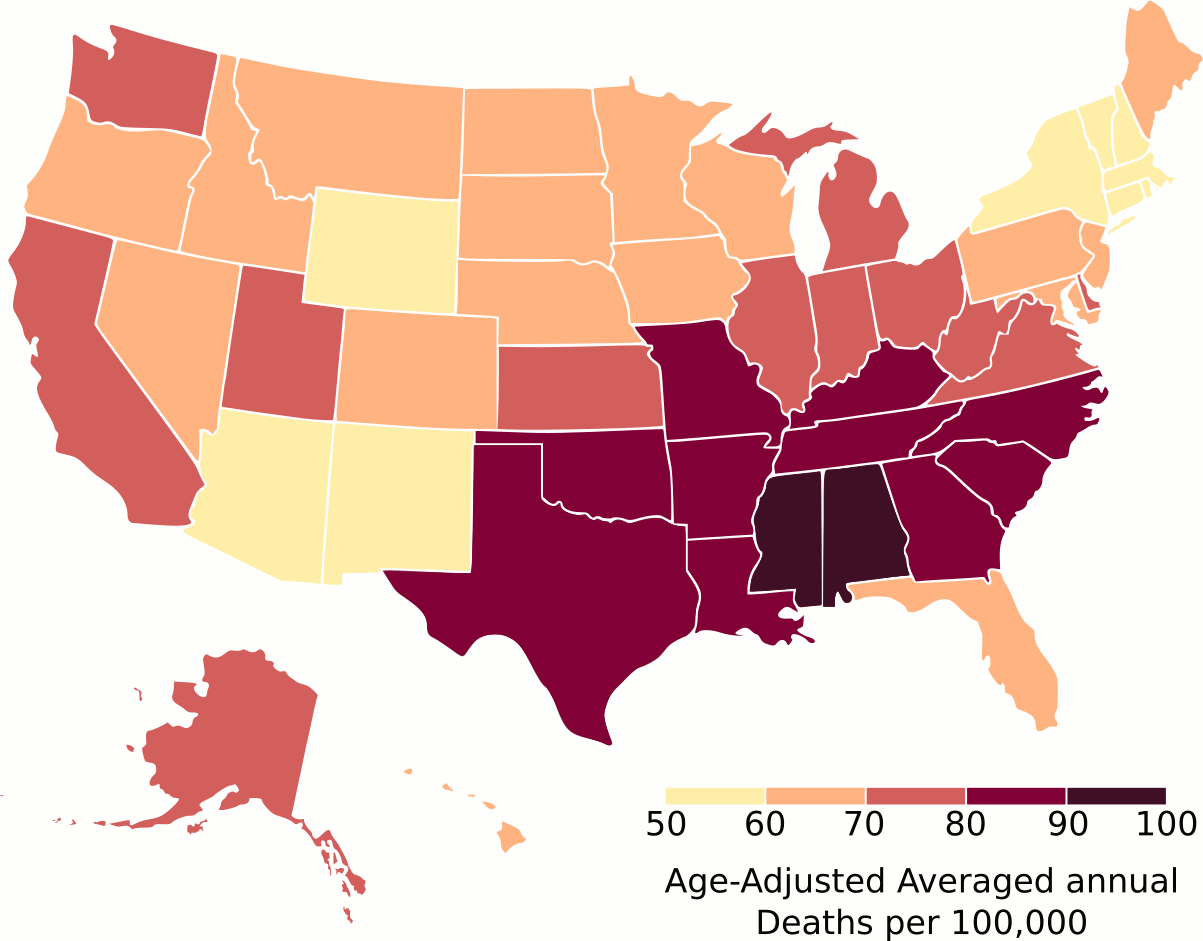What is stroke?
Stroke is classified as a disturbance in blood flow to the brain. Either the blockage or the rupture of a vessel can result in a loss of brain function. Without blood flow, the brain cannot receive the oxygen and nutrients it needs, resulting in brain cell death. The affected area becomes an infarct, which can vary in size, type, location, and associated symptoms. The range of symptoms can include impaired speech, memory, movement, paralysis and death depending on the size and location of the infarct. Because of these potentially devastating clinical outcomes, stroke is one of the leading causes of disability and death worldwide.
Types of stroke

Risk factors for stroke are identified as either predetermined or modifiable. An individual has control over modifiable factors, so by exercising and maintaining a healthy diet and lifestyle one can significantly reduce their chance of suffering a stroke.

Stroke is the fifth-leading cause of death in the United States and the second-leading global cause of death after heart disease. Its high prevalence and severe consequences have tremendous implications for stroke patients and their families, as well as a high global socioeconomic burden. The severe impact of this disease is why research to uncover the genetic and biological underpinnings of stroke is essential to continue improving the health of millions across the globe.  |
 |